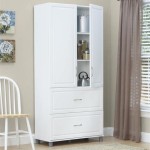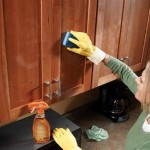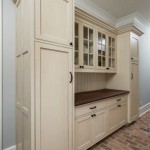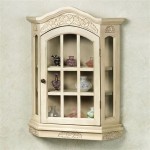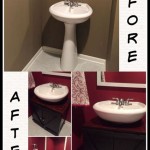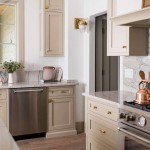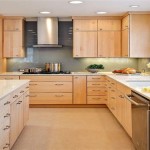Discover the Cost of Refacing Your Cabinets in Your Kitchen
Kitchen renovations are a significant undertaking, often involving considerable expense. One of the most visually impactful and potentially costly aspects of a kitchen remodel is cabinet replacement. However, for homeowners seeking a more budget-friendly alternative to full cabinet replacement, refacing emerges as a viable option. Refacing involves replacing cabinet doors and drawer fronts while maintaining the existing cabinet boxes. This process can dramatically alter the kitchen’s aesthetic without the complete demolition and reconstruction associated with new cabinetry. Understanding the costs associated with cabinet refacing is crucial for homeowners to make informed decisions about their kitchen renovation projects.
This article will delve into the factors that influence the cost of kitchen cabinet refacing. It will discuss the different materials available, the labor involved, and other potential expenses that homeowners should consider when budgeting for this type of renovation.
Materials Used in Cabinet Refacing
The type of material selected for cabinet doors and drawer fronts significantly impacts the overall cost of a refacing project. Various options exist, each with its own price point and aesthetic qualities.
Wood Veneer: Wood veneer is a thin layer of real wood applied to a substrate such as plywood or particleboard. It offers the look and feel of solid wood at a lower cost. The price of wood veneer varies depending on the species of wood chosen. Common options include oak, maple, cherry, and birch. The cost typically ranges from the more affordable options like oak and birch, to the more expensive varieties like cherry and walnut. Wood veneer provides a natural and warm aesthetic and can be stained or painted to match the desired kitchen décor.
Laminate: Laminate is a synthetic material made from layers of paper and resin pressed together. It is a durable and cost-effective option that comes in a wide variety of colors and patterns, including those that mimic the appearance of wood. Laminate is resistant to scratches, stains, and moisture, making it a practical choice for kitchens. While less expensive and more durable than wood veneer, laminate lacks the authentic feel of real wood. The price of laminate varies based on the thickness, pattern, and manufacturer.
Rigid Thermofoil (RTF): RTF is a type of vinyl that is heated and molded over a substrate, typically medium-density fiberboard (MDF). It is a seamless material that is resistant to chipping, peeling, and warping. RTF is available in a range of colors and styles, including those that resemble painted wood. It is a mid-range option in terms of cost and durability. However, RTF is susceptible to heat damage and may not be suitable for cabinets near ovens or cooktops. Some types of RTF can yellow over time, especially if exposed to direct sunlight.
Solid Wood: While less common for refacing due to the higher cost, solid wood is an option for homeowners seeking the highest quality and most authentic look. Solid wood doors and drawer fronts are typically crafted from hardwood species like oak, maple, cherry, or walnut. Solid wood offers exceptional durability and can be refinished multiple times throughout its lifespan which makes it a cost-effective option in the long term. The cost of solid wood is significantly higher than other refacing materials, making it a premium choice. The price varies depending on the wood species, construction method, and finish.
In addition to the primary material, homeowners should consider the cost of edge banding, which is used to cover the exposed edges of the cabinet boxes after the old doors and drawer fronts have been removed. Edge banding is typically made from veneer, laminate, or RTF, depending on the material used for the doors and drawer fronts. The cost of hardware, such as hinges, knobs, and pulls, should also be factored into the overall budget. These elements, while seemingly small, can contribute significantly to the final cost, especially when opting for higher-end designs.
Labor Costs Associated with Cabinet Refacing
Labor costs represent a significant portion of the total cost of a cabinet refacing project. Hiring a professional contractor or carpenter is generally recommended to ensure a high-quality and long-lasting result. The cost of labor will vary based on several factors, including the complexity of the project, the size of the kitchen, and the location of the home.
Preparation: The first step in the refacing process is preparation. This involves removing the existing cabinet doors, drawer fronts, and hardware. It also includes cleaning and sanding the cabinet boxes to ensure a smooth surface for the new veneer or laminate or RTF. Preparation is crucial for proper adhesion and a professional finish. The amount of time required for preparation will depend on the condition of the existing cabinets. Cabinets that are heavily damaged or have multiple layers of paint may require more extensive preparation.
Veneering/Laminating: Once the cabinet boxes are prepared, the new veneer, laminate, or RTF is applied. This process requires precision and skill to ensure a seamless and durable bond. The material is typically adhered to the cabinet boxes using contact cement or other specialized adhesives. The edges of the veneer or laminate are then trimmed and sanded to create a smooth, finished look. The complexity of this step depends on the size and shape of the cabinet boxes. Cabinets with intricate details or unusual angles may require more time and expertise.
Installation: The final step is the installation of the new cabinet doors, drawer fronts, and hardware. This involves attaching the hinges, knobs, and pulls, and adjusting the doors and drawers to ensure they open and close properly. Proper alignment and adjustment are essential for a professional-looking and functional result. The amount of time required for installation will depend on the number of doors and drawers in the kitchen. Custom or specialty hardware may require more time and expertise to install.
Labor costs are usually calculated either as a flat fee for the entire project or as an hourly rate. A flat fee provides more certainty in terms of budgeting, while an hourly rate may be more appropriate for projects with unforeseen complications or changes in scope. It is essential to obtain multiple quotes from different contractors to compare prices and ensure a fair and competitive rate. When comparing quotes, homeowners should inquire about the contractor's experience, references, and insurance coverage. Selecting a reputable and experienced contractor is crucial for a successful cabinet refacing project.
Additional Costs to Consider
Beyond the cost of materials and labor, several additional expenses may arise during a cabinet refacing project. Homeowners should be aware of these potential costs and factor them into their overall budget.
Hardware: While seemingly minor, the cost of new hardware, such as hinges, knobs, and pulls, can add up, especially if homeowners opt for high-end or custom designs. The price of hardware varies depending on the material, style, and manufacturer. Opting for solid brass or stainless steel hardware will increase the overall cost compared to lower-priced options. It is important to select hardware that complements the style of the new cabinet doors and drawer fronts while also being durable and functional. If existing hardware is in good condition and suitable for the new aesthetic, it can be reused to save money. However, new hardware can significantly enhance the overall look of the refaced cabinets.
Modifications: In some cases, homeowners may want to make modifications to their existing cabinet boxes to improve functionality or aesthetics. This could involve adding pull-out shelves, lazy Susans, or other organizational accessories. Modifications can add to the overall cost of the project, but they can also significantly enhance the usability of the kitchen. The cost of modifications will depend on the complexity of the work and the materials used. Homeowners should discuss their desired modifications with their contractor to determine the feasibility and cost implications.
Hidden Problems: During the refacing process, contractors may uncover hidden problems, such as water damage, mold, or structural issues. These problems will need to be addressed before the refacing can be completed, which can add to the overall cost. It is important to have a contingency fund in place to cover unexpected expenses. Homeowners should also work with a contractor who is experienced in identifying and addressing these types of issues. Addressing hidden problems early on can prevent more serious and costly problems in the future.
Painting and Finishing: If the cabinet boxes are being altered in any way such as filling previous hardware holes or adding trim, painting or new finishing might be required to blend the refaced area in with the rest of the kitchen. This will add cost in terms of materials and labor; however, it ensures a uniform and professional look.
Permits: Depending on the scope of the refacing project and local building codes, permits may be required. The cost of permits varies depending on the location and the type of work being done. Homeowners should check with their local building department to determine whether permits are necessary. Failing to obtain the required permits can result in fines or delays in the project.
Plumbing and Electrical: If any plumbing or electrical work is required as part of the refacing project, such as moving outlets or installing new lighting, this will add to the overall cost. Plumbing and electrical work should be performed by licensed professionals to ensure safety and compliance with building codes. Homeowners should obtain separate quotes for plumbing and electrical work to compare prices and ensure a fair rate.
In summary, determining the cost of refacing cabinets in a kitchen involves careful consideration of materials, labor, and potential additional expenses. Thorough research, acquiring multiple quotes, and planning for contingencies are essential steps in ensuring a budget-conscious and successful renovation project.

Cabinet Refacing Cost How Much Will Your Project Be

What Is The Average Cost For Cabinet Refacing

How Much Does Cabinet Refacing Cost 2025 S Homeguide

Cabinet Refacing Process And Cost Compared To Painting

Best Kitchen Cabinet Refacing For Your Home The Depot

Kitchen Cabinet Refacing By Improveit

How Much Does Refinishing Cabinets Cost 2025 Data

How Does Kitchen Cabinet Refacing Work

Cost To Reface Cabinets The Home Depot

New Kitchen Cabinet Affordability Replacement Vs Refacing
Related Posts

